Dog Obedience Tips | Online guide for basic dog training
Here are some basic dog obedience tips to help you learn how to train your dog in a gentle and caring manner.
If you are a dog owner or in the process of considering becoming one then to fully enjoy the experience of owning and caring for your dog I would strongly recommend that you learn the very basic training commands that your dog must learn to obey.
Basic Dog Obedience Training
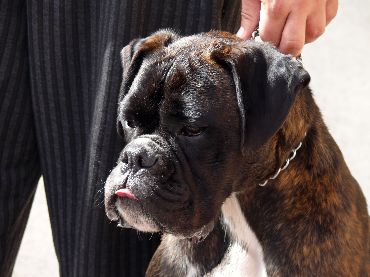
There are a few simple reasons for why you need to teach your dog simple and clear commands.
It will make the whole experience one of pleasure for you and your family by not allowing your dog to dictate the terms.
It will more importantly keep your dog safe from being knocked down on a busy road.
It will also prevent any instances of potential mauling and you will never have a terrified postman!
Here is a list of the basic commands:
• Sit
• Stay
• Stop
• Stand
• No (To discourage wrong behavior)
• Fetch
• Heel (Used when walking your dog)
• Leave (To avoid conflict with other dogs)
These are hopefully self explanatory for the most part but there is a training method that goes along with them.
First of all it is to only use these words when you are training your dog.
Don't use combinations and add other words on. Let's use an example of teaching your dog to sit.
In a firm and commanding voice say the word "Sit."
Then firmly press down on the dog's haunches and push back on the chest at the same time, until the dog is in the same position.
When this happens give the dog a small reward and praise it. Continue this until it instantly obeys this one word command.
Here is what not to do and many make this mistake.
They will say things like "Sit boy" or "Sit Girl" or "Sit Now" or "Come on Sit."
Don't ever do that as it just causes confusion
It is the same process then for all the commands. Master one of them and then move on to the next.
Never try to do them all at the one time as this just confuses the dog and interrupts their training.
You can of course join a dog club where this is demonstrated but it really is just as easy to do at home.
Remember, keep to the single word command followed by a small reward and praise, that's all there is to it on a consistent basis.
Once these basic commands have been achieved and be relentless about that then it is a great idea to move to the more advanced training.
This is called agility training where you can train your dog to do tricks, or go through obstacles. This is great for stimulating their minds and also a fun thing to do.
I always recommend listening to the experts when you wish to learn something and if you have ever watched episodes of the The Dog Whisperer you will see he uses consistent and basic commands at all times.
There are many great instructional books and DVDs available online and it's a great idea to get yourself a small library of those to learn the basics and then build up to the more advanced training techniques.
However, learn basic dog obedience training first and the whole process will be a fun experience for you both.
How To Stop And Prevent Your Dog From Digging And Chewing
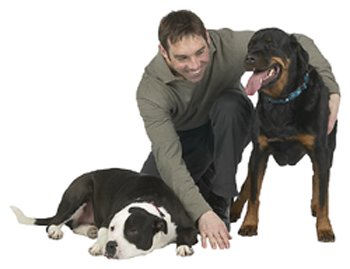
If you are a dog owner, or are considering becoming one there are many skills you will need to learn, develop and then make a part of your every day life.
Two of these are if you ever notice your dog starting to dig, especially your precious lawn, and the other is habitual chewing.
You may be wondering why I am including both of these in the same article but there is a very good reason for that.
The circumstances that drive both behaviors are the root cause of the problem, so it is much better to deal with the reasons why your dog will behave like this and eliminate the circumstances, rather then try to fix a problem.
Dogs do get bored and they are also naturally curious and inquisitive animals. Put both of these characteristics together and you will have created the ideal circumstances for digging.
Typically a dog will start to dig if it finds an interesting smell, or its nails have started to grow, or it is perhaps fenced in and wants to escape.
A dog on heat is particularly prone to digging and at the end of the day this is quite natural behavior.
Trust me on this one thing, if there is the smallest hole in either your fencing or hedges, your dog will find that and use it as an escape route if it is left to its own devices.
If your dog is over fed and has extra left over, the natural instincts are to keep it for a day when they have none.
We have all probably witnessed a dog burying a bone and that is why.
Female dogs tend to dig more than males and again this is natural behavior of preparing a dog to rear their young.
There are many reasons but the best way to stop your dog from digging is by giving them plenty of exercise and prevent them from being bored.
There are some great e-books and online instructional DVDs available to help you with the boredom elements, so my advice would be to get some of those and then apply the instructions.
One good tip is though to dig up anything your animal has buried.
That way when they return and by smell they will notice it is gone, then after a few times they will desist from this behavior as there is no reward.
Primarily though daily walking and keeping them otherwise occupied is the key to stopping or preventing them from digging.
It really is a similar trait with chewing. A dog will gladly munch through its bedding, mats and your furniture if left alone and bored.
It is an instinctive behavior and especially when they are young and teething. I have had many people come to me and ask me how you stop this.
It is nearly always working parents who have to leave the dog alone for large parts of the day. That is boredom in anyone's language.
There are a host of dog toys out there and you need to train them to chew on those and not your furniture.
Again there are many instructional DVDs and books online to help you learn how to do that. The first step however is to get some chewable toys and allow them to play with those.
In summary, regular walking and training is essential and some toys to play with will help with the boredom. You can find those and some great help online, so check it out.
Dog Training - How To Stop or Prevent Biting
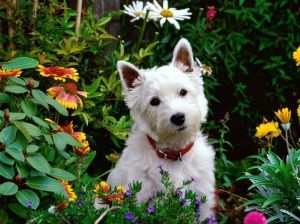
Learning how to stop or prevent your dog from biting is an essential skill for every responsible dog owner.
We have all seen the various news reports about a family member, or a member of the public being mauled by a dog.
Responsible dog owners know they have an obligation as part of their dog training to stop or prevent biting.
The earlier you start this process then the easier it will be to succeed.
In the ideal world you would do this when your dog is a puppy and there are many great books, training methods and DVD instructional videos available to help you achieve that outcome.
When dogs are puppies or in the first year they are playful and also like humans start to have teething problems.
One of the big mistakes many dog owners make is to let them bite down on their hands, or grab hold of the end of an old jumper or clothing.
This is a huge mistake as the dog then believes that this type of behavior is acceptable and will continue on with it believing that it is ok to do this.
It isn't the dog's fault at all as he associates this biting activity with play.
When they are puppies their small teeth don't hurt that much, so we don't mind too much either and so this poor pattern of dog behavior continues on.
Instead of doing this, allow them to do the same thing but with a plastic toy.
Avoid any semblance of holding the toy and letting the dog bite and pull at it.
This happens a lot and all it does is increase the aggressive side of a dog's nature.
Play time should of course be fun, but go for throw and fetch type activity rather than holding on to something and allowing your dog to try and pull it from you with their teeth.
Make sure the dog drops the toy rather than try to pull it out of its mouth.
You shouldn't wrestle with your dog either as again they will associate this type of behavior as being acceptable and we don't do that.
Never ever chastise your dog by physically hitting them as this only induces basic dog aggression.
Instead make a loud noise and the dog will associate a bite with the noise.
When dogs play with each other they let out a high pitched whimper if they are hurt.
Teach your dog the same behavioral tones and they will quickly understand when play and biting have gone too far.
If you or a member of your family do get bitten which is a genuine safety concern, immediately stop any form of play and leave the dog for a few minutes.
Dogs crave attention and again they will associate being left alone with biting and stop doing it.
The important thing here is consistency, so all of the people in contact with the dog must understand and behave in the same way.
With older dogs you may have to use muzzles to begin with. If you see signs of aggression or propensity to bite stand tall and growl over them, indicating you are the dominant one and making them submissive.
Loud noises get attention, so without any eye contact make yourself heard. The dog will get the message if consistently repeated.
Don't let your dog get over excited as they tend to bite from that experience, so keep them relaxed and just show them that you are in control.
I would recommend getting a good book or DVD and there are many available online to help with dog training on how to stop or prevent biting.
How To Train Your Dog To Walk On A Leash
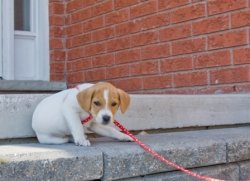
Teaching your dog to walk on a leash is one of the most crucial skills to teach any new dog, especially a puppy.
It'll make future walks with your dog safer, and more enjoyable for the both of you.
Getting your dog trained to walk on a leash takes a couple of weeks, so don't rush it. Each dog is different.
Don't panic if your dog doesn't seem to "get it" at the start.
It's very important that you take the patience to ensure that your dog is leash trained.
Follow these three simple steps to make your training a breeze:
Step 1: Ensure that you get your dog comfortable with its leash as soon as you bring it back to your house. Try not to get a bulky collar until your dog is comfortable.
Some dogs will try to get the collar off by scratching it or rolling around. Distract your dog from the collar by playing with them.
Even though you might be tempted to take off the collar, don't! You should only take the collar off when your dog has gotten use to it.
Step 2: Once your dog is used to his collar, it's time to add on the leash. It's very important to get him comfortable with it. Your aim is to not to scare your dog with the leash!
Step 3: It's now time to start training your dog with both the collar and leash.
It's important to note that these are general guidelines. No single technique works for all dogs so you might have to do some experimenting.
Walk slowly with your dog around your house without pulling on it. This is to get him or her acclimatised to it.
Once your dog has gotten use to it, step up the pace and do some slight jogs or runs, gently tugging along the leash.
Tip: If your dog is extremely playful or active, consider playing with it before you do this activity to tire him out. This will make the training much easier.
Mix it up. Do zigzags, unexpected left turns and right turns. Keep your dog guessing, and get it used to following your commands on the leash.
To make your training smoother, it is always good to reward your dog for good behaviour. Use treats and rewards to help facilitate this.
Before going out on a walk, you need to maintain control from the start.
If your dog drags you behind when you open the door, you need to calm it down by standing there and doing nothing. This will help set the tone of the walk.
Teaching a dog to walk on a leash might seem daunting. However, it's an invaluable skill that all dogs need to know.
With time and patience, any dog can be trained, so make sure you start early.
Dog Separation Anxiety
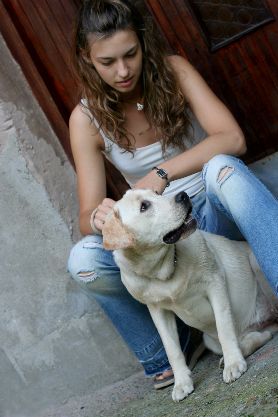
Dog owners adore their dogs and the dogs love them back just as much.
The bond that a pet owner shares with their dog is what makes the dogs go through separation anxiety when the owner has to be away, which can be destructive.
This can be extremely frustrating for the pet owner, and in understanding what causes the dog to go through this, there are a few possibilities.
A dog that goes through a certain amount of trauma can be susceptible to separation anxiety.
Also, changes in the dog's routine or what he is used to doing can cause him to experience anxiety and depression.
This can be made worse if the changes involve the dog owner to be away from the dog, whereas the dog was used to him being around before.
Other factors could also play a role, like the possibility that the dog is just too used to the fact that his owner is always with him, and so he has gotten accustomed to that and gotten too comfortable.
Despite what the cause is, it is important that it be looked into and a solution be found to help the dog to cope better, as the dog will be exhibiting behavior that may be destructive in trying to cope with his new reality and the trauma that he is experiencing.
It is important for the dog owners to realize that even though the dog might behave badly, it does not make him a bad dog, and he is not angry at you.
He is just agitated from the anxiety of you leaving and he does not know how to deal with the frustration that comes with his anxiety.
Some dog owners respond to the dog's behaviour by punishing the dog, which is a bad idea.
The dog should not be punished, as he is expressing his frustration.
Owners need to understand that he is reacting to something that is extremely uncomfortable to him, and punishing him will make the situation worse.
It also will not improve the situation so there will be no benefits to doing that at all.
A method that has been observed to work well with the dogs is crate training.
The basis for this method is to train your dog to be comfortable and be anxiety free for instances when you are apart from each other.
This method has been proven to work, but not for extended long periods of time. A good rule is not to exceed 6 hours while you are training the dog for this.
A long term strategy to help your pet deal with separation anxiety might be to develop some sort of language and certain cues that you both perform before your departure.
This will train the dog so he knows that you will be leaving soon, but it should also make him comfortable about it.
If done properly, this can work wonders but it will take time and patience on your part to get your dog used to it.
A lot of dogs do experience separation anxiety when their owners leave, and training for your dog is needed to get him coping and comfortable when you leave.
Fortunately there are resources that you can use to ensure that your dog is helped in coping better with the separation anxiety.
Agility Training For Your Dog
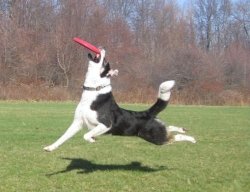
One of the most famous dog shows in the world is Crufts and as a dog owner and breeder I was always fascinated not only to see the best in breed animals, but to see the levels of agility training that had been achieved.
I knew from my own experience that it is fairly straightforward to train a dog to a certain standard but this was a whole new level.
Coming from the country I also used to marvel at the sheepdog trials, and how a farmer or shepherd could use a working collie dog, to group and lead sheep into a pen. All he ever seemed to use were a few words and those strange whistles.
Only when I started to look around did I start to realise just how many opportunities there are to enter the many competitions, and indeed types of competitions where some type of dog agility training could be used.
I had heard criticism of these events as being cruel and not normal, whereas nothing could be further from the truth.
I have spent my life with dogs in one way or another and agility training simply brings out and enhances the very natural behavior of a dog.
Have a look at some of the videos on YouTube and you will see just how much the dogs are enjoying themselves.
The competitions for dogs and their owners are both varied and widespread throughout wherever you may live.
They will include shows similar to Crufts, but at local and regional levels, circuit routines with fence jumping and obstacle disciplines which are always fun to watch, especially when they go wrong and even dog dancing.
All of them are designed for one simple thing and that is fun.
Many dog owners take this very seriously but that is probably driven by the prize money which today can be quite lucrative.
What is even more important is that a top in class owner can make a lot of money when they take their dog to stud, as they can ask for a substantial fee.
Crufts for example has no prize money at all but the winners will all be able to charge lucrative stud fees for having a podium placed dog.
Within any show there are usually a number of "classes" or categories including puppy, junior, limit, open, best of breed, best of group etc but this will vary from show to show and from state to state, so you will need to check the local rules.
You may be wondering by now how to get started with this and there are many clubs scattered around who cater for this. If there is not one local, then online is your best choice.
There are any number of instructional videos available depending on what discipline you want to go for.
Here are some basic tips to get you started if it is something that interests you.
Always issue clear and precise commands - for example stay, come, sit. Keep them short and consistent.
Practice is the key and you will need a lot of it but focus first on the basics of your dog understanding the basic commands.
Don't move to the weaving, the speed walking until your dog knows to sit, stay and come otherwise you will end up very frustrated.
My best advice then is learn the basics, get some DVDs online and watch them and once the basics have been mastered put the new training into place.
Bad Habits | dog obedience tips
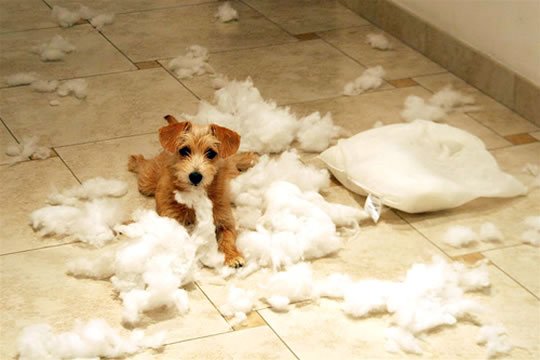
You can learn more dog training tips here in our section on
How To Train Your Dog Not To Bark and Other Bad Habits
And there are many more guides available here to help you learn how to care for your dog to keep it happy, healthy, and fit:
What is Clicker Training And Why Is It An Effective Dog Training Technique?
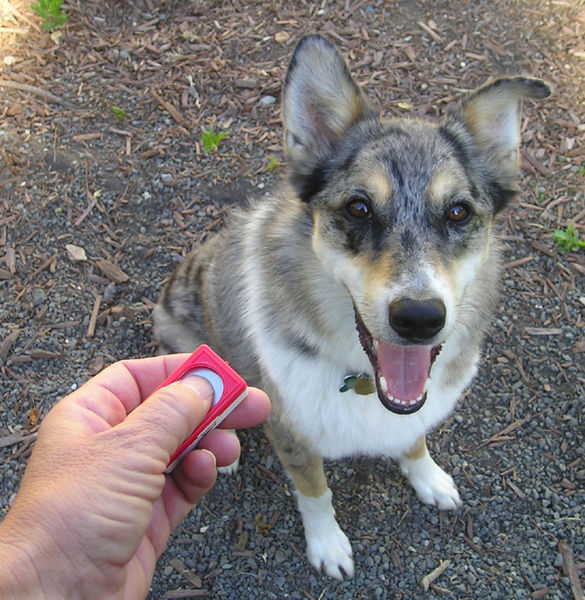 dog obedience tips clicker training
dog obedience tips clicker trainingWhen deciding how to train your dog, it's important to evaluate different methods to figure out which will work best for your and your dog. Clicker
Training is an effective dog training technique you may consider using with your dog. This training technique uses only a few supplies, so it's inexpensive to try out.
It's also an easy method for both you and your dog to learn, and is a positive method of dog training. So, what is clicker training?
Clicker training is a method of dog training that utilizes a clicker and treats to identify and reinforce positive behaviors your dog is performing.
It's a peaceful and positive method of dog training that can be done by almost anyone willing to learn and practice the methods consistently.
The clicker makes it easy to immediately identify the desired behavior because it's easy to click and you can do it without approaching your dog.
The key to getting your dog to understand the good behaviors is to identify it immediately after he's done it, so the clicker is perfect for doing this.
You can either create an environment for the desired behavior to occur or you can let it happen naturally, and then you immediately make the clicking sound with the clicker.
Once you've identified the desired action by clicking the clicker, you then praise your dog with a high pitched voice and reward him with a small treat.
There are a variety of small treats to choose from, but the small chewy ones work best for this.
For your convenience there are also treat pouches available for you to carry treats around with you during training. It helps to have the treats at hand when a positive behavior is exhibited.
After a positive behavior is identified and rewarded several times, your dog is then ready for you to move slowly from the training phase for that behavior.
Try taking away the treat once and a while at first, and then lessen the frequency until you're no longer providing a treat.
At this point you'll be using the clicker and praising behaviors, and gradually praise your dog less and less.
Eventually you'll only be using the clicker. Once you are down to the clicker only, decrease the frequency that you click it for positive behaviors.
This doesn't mean you stop praising your dog, you just don't want to have to do it every time.
Once your dog has been weaned from the clicker, continue to praise your dog periodically when he does something good.
Just be careful that you praise and play with your dog at neutral times as well, so he doesn't become dependent on the praise to continue desired behavior.
Clicker training is one of the easiest and most effective forms of dog training for beginners.
It's easy for you as a trainer to learn, and it's easy for your dog to catch on to because it is immediate reinforcement for him.
Clickers are also low cost, and since you'll only need one, it's a great investment. You can use the same clicker for multiple dogs or if you want to reinforce additional behaviors for your dog later.
Important!
Make the time and effort to access good dog obedience tips and training resources... go to the park training, or buy the DVD training courses... just make sure you and your dog are able to understand each others needs and you will have a great relationship filled with trust and loyalty.
Continue to Research
A lot of times, poor dog obedience is the result of a lack of knowledge or understanding of how to train a dog gently.
If this is the case, then you should take the time to begin researching the subject of dog obedience tips so that you can inspire trust and loyalty in your dog while you gently give it obedience training..
There is a lot of power and relief that comes from learning about various topics. You’ll be surprised about how much a little research can help you with training your dog.
More dog obedience tips Resources
Here are some dog obedience tips products you can buy online that I think look very useful:
Below here I'm featuring more pages with helpful how-to-do-it dog obedience tips.
Feel free to submit your own story or article about it, and I will create your own page here with your contribution for the community to read.
More Tips for How To Do It Yourself: Pet Care
Do you have a Pet Care tip you want to contribute here? Share it!
Read the latest updates & rest of the how-to tips here:
Click the Title links below to see the latest how to do it tips and contributions to this page...
Bad Dog Bevaviour Chewing Training
It is common for puppies to chew on just about anything they can get their mouths into. This will include your furniture, clothing and yes, you. Puppies …
Dog Behaviour Books To Help You Train
Dog behavior books are an excellent way to learn from the professionals. It is an alternative to dog training and a great way to attempt to cure dog problems …
Male Dogs Behaviour Guide
If you are thinking of getting a dog then one of the first decisions you need to make is which sex to choose.
Whilst all dogs bark and play, there can …
Bad Dog Behaviour Digging
Digging is common dog behavior. It becomes a problem when your backyard starts looking more like a section of the moon then a regular backyard.
Dogs …
How To Deal With Destructive Dog Behaviour
Inside every bad dog there is a good dog trying to get out; with the right changes in your behavior, your dog's behavior will change as well. Here are …
Tips For Understanding Dog Behaviour
Understanding dog behavior can be a challenge but is a necessity if you wish to maintain a great relationship with your dog, not to mention a manageable …
Basic Dog Training Supplies You Need
Basic Training Supplies include basic dog care supplies as well as dog toys. The main things you'll need are a collar, leash, and treats.
Other than …
Dog Training Tips To Help You Train Your Dog
If you're new to dog training or are having difficulty training a dog these tips may help you learn to effectively train. You'll be more confident in …
How To Find Dog Training Help
If you're looking for dog training help then you're lucky because it's never been easier to find the help you're looking for. There are many different …
Why It Is So Important To Train Your Dog
Dog training is an important responsibility of any dog owner whether you choose to train your dog yourself or have someone else train him for you. There …

"Power Tips" magazine is back!
You Get A Free Complete Self Help Report delivered to your email box every edition, plus you get a free PLR article and other great gifts!
SUBSCRIBE BELOW ... I promise you will want to USE what you learn!
I really want to know what you think of this site, this page, and to hear your tips or suggestions about it.
So please share your story or simply add a Comment in the comment box.
If you feel that the information on this page has been useful to you please give it a Like or share it with your friends - thanks!!
"You are a life Saver!!
I recently discovered this site and I can tell you that my life has not been the same. I now come here EVERYDAY and spend at least 1 hour.
I used to spend that time browsing online fashion and beauty
magazine which just means that I spend more. Now I have replaced that
habit with coming here.
In future I will think about contributing articles as well. Thank you! Thank you!! Thank you!!! and God bless"
Contact Us | About Us | Terms of Use | Privacy Policy | FAQ | Testimonials
Amazon and the Amazon logo are trademarks of Amazon.com, Inc. or its affiliates. As an Amazon Associate I earn from qualifying purchases. Product prices and availability are accurate as of the date/time
indicated and are subject to change. Any price and availability
information displayed on [relevant Amazon Site(s), as applicable] at the
time of purchase will apply to the purchase of this product.
Back to HOME PAGE of this dog obedience tips section of the site.


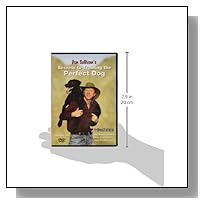

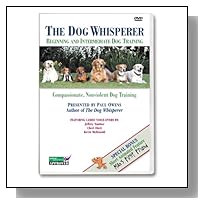

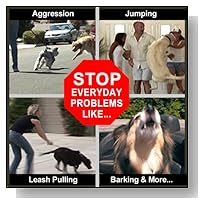
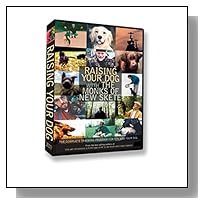
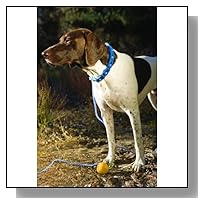









New! Comments
Have your say about what you just read! Leave me a comment in the box below.